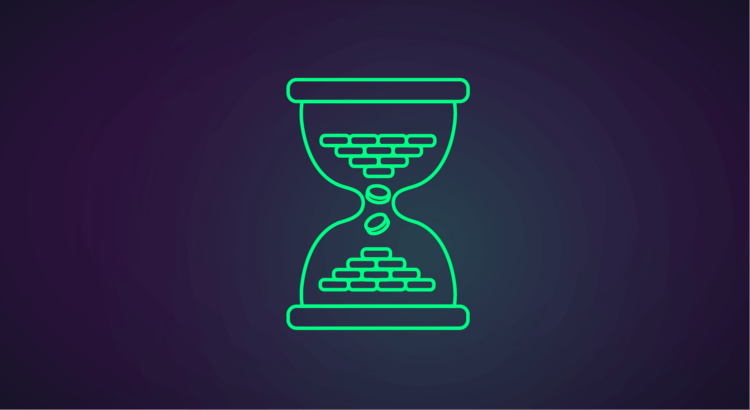Introduction

We all are used to living in the world of centralized banks and institutions that govern finance – also known as the old economy in the crypto and fintech scene. In fact, many people cannot imagine that the financial system could work differently. They simply take this existing system as the given and best option.
But is this the case? Or are there good reasons why there is a need for new paradigms like the growing new area of decentralized finance? Let’s talk about some historical milestones in the development of the financial systems of the old economy, before examining its disadvantages.
The Old Economy: History, Status Quo and Risks
Money Makes the World Go Round
Let’s start at the very beginning and go through some basic concepts. The financial story of humankind starts with the invention of money.
Money is defined as an item that can be used as:
- a medium of exchange (can be exchanged for any goods and services and avoids limitations of barter)
- a unit of account (can be used to measure the value / define the price of different goods and services making them comparable)
- a store of value (can be saved, retrieved and exchanged for services and goods at a later time with a well predictable value)
Sometimes usage as a standard of deferred payment (buy goods now, pay money later) is also considered to be an important function of money, but the first three are the most relevant in case that you need to decide, whether an item is money or not.
It’s hard to say where or when exactly money was invented. Assumably, it happened before the beginning of written history. The first people started to exchange goods for goods (“barter”), and then they did the transition and introduced other items in between to simplify the price definition and exchange process.
Money evolved during the time and passed through the following phases:
- Commodity Money: This was the first type of money mankind used. Commodity money consists of objects having value or use in themselves (intrinsic value) as well as their value in buying goods. Examples include gold, silver, salt, peppercorns, tea, decorated belts, shells, alcohol, cigarettes, cannabis, silk, candy, cocoa beans.
The king of Lydia, Croesus is credited with issuing the first true gold coins with a standardised purity for general circulation. It was around 550 BC. - Representative Money: This kind of money has no or little intrinsic value and can be e.g. printed on paper. But it represents a value, mostly it should be commodity-backed. Examples here would be claims on a commodity like gold and silver certificates.
- Fiat Money: Fiat money is the modern type of money we are using every day. It doesn’t have any intrinsic value and just has been established as money, mostly by government regulation (legal tender). Fiat money has value only because a government maintains its value or the parties agree on their value. Actually, fiat money started as representative money, first banks accepted the deposits of silver and gold and issued certificates to their clients representing the value of these deposits. But nowadays fiat money is not backed by any commodity. And this can become an issue. We will look into the potential problems of fiat money in old economy finance a bit later.
The question whether Bitcoin and other cryptocurrencies are money or not is raising animated discussions. Some consider them to be money as they can fulfil the three mentioned above functionalities: medium of exchange, unit of account and store of value. Others disagree because the possibilities to pay by Bitcoin and the like are limited, as the cryptocurrencies are not yet widely accepted.
From my point of view Bitcoin is most similar to gold or silver, it’s a kind of digital precious metal, the scarce resource in the virtual world. And because you can also use it for payment, it’s actually very similar to commodity money.
History of Banking – The First Banks
Let’s briefly explore the history of banks. A complete study would be an overkill and go too far beyond the boundaries of this one article, so we just look at a couple of milestones.
The invention of money thousands of years ago simplified trading. And nearly at the same time the first banking services were introduced: money lending. As far back as 4000 years ago merchants already gave loans to farmers or wayfarer traders in Assyria, India and Sumeria. Money lending was also known in ancient Greece, the Roman Empire and China.
In the 12th century financing of the Crusades required movement of big amounts of money across different countries. Templars order offered an early form of banking services:
a nobleman who was interested in participating in the Crusades could place all his assets under Templar management while he was away. In 1150 Templars started to offer letters of credit for pilgrims which were travelling to the Holy Land. Pilgrims deposited their valuables with a local Templar branch, received a document indicating the value of their deposit, then used that document upon arrival in the Holy Land to retrieve their funds in an amount of treasure of equal value.
Renaissance Banking
The first Italian bank was founded also around the same time as templars offered their banking service, in the 12th century in Venice. The first Italian banks were so called “merchant banks” (nowaday you would call them probably “investment banks”). They emerged from the Italian grain and cloth merchants and were originally intended to organize finance of long trading journeys but were later applied to other areas, e.g. to finance grain production and trading.
The Renaissance era is known not only for its blooming culture but also for vivid development in other areas of human life like science and economy. Italy was the center of the rapidly growing banking services in the modern sense of the word with banks in Florence, Venice and Genoa. Then from Italy the banking development spread all over Europe. For example one of the most famous Italian family banks, the Medici bank, founded in the 14th century, later maintained several branches in Europe: Rome, Venice, Milan, Pisa, Geneva, Lyon, Avignon, London, Bruges.
Merchant banking developed from financing trade on one’s own behalf to settling trades for others and then to holding deposits for settlement of “billette” or notes written by the people who were still brokering the actual grain. And so the merchant banks became centres for holding money against a bill. These deposited funds were intended to be held for the settlement of grain trades, but often were used for the bank’s own trades in the meantime.
The “Sin” of Banking
The first merchant banks were real benches on the grain markets in Lombardy, Italy (banco = bench in Italian). Often they were held by Jews. Jews had one great advantage over the locals: Christians were strictly forbidden from any kind of lending at interest, since such activities were equated with the sin of usury. Jewish law also disallowed usury among Jews, but not when the borrower was a Gentile.
The rise of Protestantism in the Reformation, however, freed many Christians from Rome’s church laws prohibiting usury. In the 16th and 17th century several world-changing inventions like the printing press and double entry bookkeeping occured. It was the era of exploring the world and engaging in maritime trade. Technological innovations and increased trade led to the rise of a new merchant class. Protestant families began to move into banking to an increasing degree, especially in the 18th century in European countries such as the United Kingdom, Germany and the Netherlands. Tuur Demesteer analyzed the time of the Reformation and drew a parallel between it and the rise of the Bitcoin. He provides some very interesting views on the similarity between the protests against the monopoly of the “old school” church during Reformation and the cryptocurrency revolution aiming to disrupt traditional finance. See The Bitcoin Reformation for more information.
The Dawn of the Financial System
In the 19th century, the rise of trade and industry in the US led to powerful new private merchant banks like J.P. Morgan & Co, founded 1871. During the 20th century, however, the financial world began to outgrow the resources of family-owned banking. Corporations came to dominate the banking business. For the same reasons, merchant banking activities became just one area of interest for modern banks.
In the course of time new types of financial activities broadened the scope of the banking services: merchant-banking families started to deal in everything from underwriting bonds to originating foreign loans. By the end of the 16th century and during the 17th, the traditional banking functions of accepting deposits, moneylending, money changing, and transferring funds were combined with the issuance of bank debt that served as a substitute for gold and silver coins. New banking functionalities supported commercial and industrial growth.
By the end of the 17th century, banking was also becoming important for the funding requirements of the combative European states. This led to government regulations and the first central banks – banks that manage the currency, money supply, and interest rates of a state and regulate and oversee their commercial banking system. Central banks were established in many European countries during the 19th century. Although central banks today are generally associated with fiat money, the 19th and early 20th centuries central banks in most of Europe and Japan developed under the international gold standard.
The History of the Gold Standard
Precious metals were used since ancient times as means of payment. Most popular metals were the most rare ones: gold and silver. Due to their scarcity they were most qualified for storing the value. End of the XIX century in the time of fast economic progress, silver started to lose its relevance and gold became the common standard.
The gold standard was a monetary system in which a country’s currency had a value directly linked to gold. England became the first country to officially adopt a gold standard in 1821. By 1900, the majority of the developed nations were linked to the gold standard.
With the gold standard, countries agreed to convert paper money into a fixed amount of gold. A country that used the gold standard set a fixed price for gold and bought and sold gold at that price. Thus the currency exchange rate between 2 currencies bound to the gold standard was stable and the exchange process was easy.
Moreover central banks were obliged to back the issuing of banknotes with gold reserves.
The Era of Fiat Money
During the First World War governments of countries involved in it basically invalidated the gold standard: they needed to finance the war costs and the fastest way to get more money was just to print them. After the war it was nearly impossible to restore the standard, because in this case the value of every national currency would be re-estimated, based on the proportion between the real money supply to gold reserves. This would expose the real devastating degree of inflation.
Until the 1970s an indirect implementation of the gold standard existed, a so-called Gold Exchange Standard. It was based on the Bretton Woods Agreement, which was the framework for the global currency markets until 1971. Within the Bretton Woods system, all national currencies were valued in relation to the US Dollar. USD became the dominant reserve currency. The Dollar, in turn, could be converted to gold at a fixed rate. The global financial system continued to operate upon a gold standard, albeit in a more indirect manner.
But in the 1970s the Gold Exchange Standard was cancelled. The era of the gold standard was completely over and the era of fiat money began.
The term fiat derives from the Latin phrase for “let it be done”, in the sense of an order, decree or resolution, because the value of this type of money is defined by the order of government. Without the gold standard banks are no longer obliged to keep as much gold as they print paper money. That means, they can print as much paper money in national currency, as the government wants. And this leads us to the next chapter where we discuss the main issues of the old economy.
Main Issues of the Traditional Financial System
In the following chapter I’d like to describe the most important risks of the old economy.
Full Government Control of Legal Tender
In the centralized financial systems the government has the full control of legal tender – officially accepted means of payment in the country. If you are travelling between countries that don’t have a shared legal tender, you need to take care of getting the national currency of the country you are going to visit, and to exchange the remaining amount back when returning home. You can easily lose some money if exchange courses are not for your benefit. Moreover the government can decide at any time to remove coins or banknotes with the certain denomination (e.g. 500 or 1000 Indian rupee banknotes in 2016) from the money circulation or to replace one currency by another (e.g. national currencies of European countries were replaced by EUR in 2002) and you have no control at all, you need to accept it as given and to take care of exchanging the old means of payment to the new officially accepted one, otherwise you will be excluded from the economical system.
Just think about it: the government has the full control of legal tender and can declare the means of payment you have to be invalid at any time. This situation is taken for granted by people, we don’t know it any other way. But actually it’s weird that you as the owner of a legal tender that you’ve earned in a fair way have no influence on whether this means of payment remains valid. Even more than that: you have no influence that the value of these means of payment remains stable. And this leads us to the next issue.
Central Control of the Money Supply
Hard currency is a currency that stays stable over a long period of time. As an opposite soft currency is a volatile currency which can quickly depreciate. Whether a currency is considered to be hard or soft depends on the fact, how much money is already available and how quickly the supply of the money can grow.
Examples of hard currencies would be USD, EUR, JPY, GBP and CHF, they are often also used for international settlements and also for savings in countries where the national currency is soft. A prominent example of an unstable or a soft currency is the Argentinian peso, which in 2015, lost 34.6% of its value against the dollar, making it highly unattractive to foreign investors. Another one is the Venezuelan bolívar. And we will use the latest example to show up the most important problem with the traditional financial system: the complete dependency of the reserve and money supply on the central instance, on the government and central banks. It may work well in stable societies with strong economy and democracy, but it can become very ugly in other countries, like Venezuela.
Since the government of Hugo Chávez established strict currency controls in 2003, there have been a series of five currency devaluations, disrupting the economy. The most recent two were as following: The Venezuelan government announced on 7 March 2007 that the bolívar would be reevaluated at a ratio of 1,000 to 1 and renamed it to the bolívar fuerte as a consequence of the inflation (1000 bolívar = 1 bolívar fuerte)). Fuerte means “strong”, and this is especially ironic because in June 2018, seven months after its release, the value of the strong 100,000-bolívar fuerte note had its value reduced by 98% as a result of increasing hyperinflation. And one year later, on 22 March 2018, president Nicolás Maduro announced a new monetary reform program, with a planned revaluation of the currency at a ratio of 1 to 1,000 due to a hyperinflation (100.000 bolívar fuerte = 1 new bolívar soberano).
Interesting to see how the opinion of the economics experts about the stability of a currency changed over time in this regard. In the 19th century many experts believed that the stability of a currency depends on its market value and in the 20th many of them believe that the stability of a currency depends on its resistance to governmental control.
Government Intervention into the Economy
Another weak point of the old economy is the possibility of the government to intervene into the free market. This can cause different kinds of issues and at the end of the day also can lead to the financial system crash. One of the first examples of the fatal consequences of government’s intervention can be found already in the Roman Empire. In order to gain popularity and love of the common people the roman emperors like Nero have artificially reduced the prices for basic foods like corn, sometimes the foods were even given to people for free. It became unattractive to cultivate corn and other foods and the agricultural economy, one of the most important parts of the economical system, started to collapse. The emperors tried to save the situation through more regulation, for example, they regulated prices and salaries, but it only made things worse and led to a new round of devaluation of money. Of course, it’s not the only one reason why the Roman Empire was destroyed, but one good example of the financial mismanagement which contributed to the bankruptcy of the Roman government and the death of the Empire.
Of course, there are more sad examples of the consequences of government intervention into the free market in modern and recent history as well. Many of them can be found in the history of the Great Depression in the United States in the 1930s or in the history of socialistic countries which were trying to implement a nonviable Planned Economy. In his famous article “The use of the knowledge in the society” Austrian-British economist Friedrich Hayek submits that a centrally planned economy could never match the efficiency of the open market because what is known by a single agent is only a small fraction of the sum total of knowledge held by all members of society. A decentralized economy complements the distribution of information throughout society.
The capital market is subject to the same rules as any other free market. Any central intervention into it can have the same disastrous consequences for the economy as discussed in the previous chapter.
Further Reading
During writing this article I read the book “A Brief History of Money, or Everything You Need to Know About Bitcoin” by Seyfedin Ammus, the article “The Bitcoin Reformation” by Tuur Demeester and used online sources like different financial encyclopedias and Wikipedia to create this bright overview about the history of the traditional banking and finance system for you.
I hope you enjoyed reading!
How about a New Era of Payments?

Culminating over a decade of work in the payment industry, Finergizer is our flexible, all-in-one payment orchestration platform for big international players making the future of e-commerce. The software comes with several feature-rich elements, perfectly focussed on specific areas of online payment:
- Finergizer Payments presents a stand-alone payment gateway with easy integration options for all kinds of local payment service providers and payment methods.
- Finergizer Vault keeps customers’ payment data in secure storage, facilitates the tokenization of credit card data for safe processing in accordance with PCI DSS guidelines and enables recurring card payments.
- The upcoming Finergizer Marketplace will enable features relevant for the marketplace business model: multi-merchant purchases / split payments, merchants’ billing, settlement and payouts.
Curious? Find out more about Finergizer on our main page and learn the ropes in a hands-on demo!



